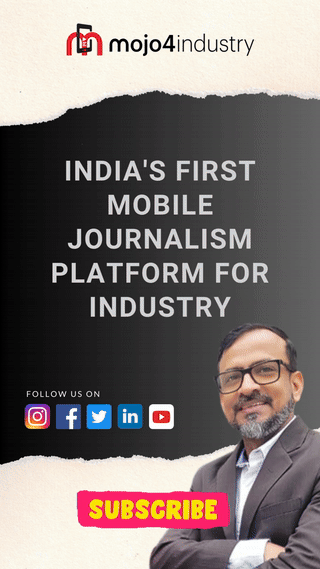Choosing the Right Thermal Cutting Process for Plate Cutting
In the world of plate cutting, selecting the appropriate thermal cutting process is crucial for achieving desired results in terms of precision, efficiency, and cost-effectiveness. On this note, we conducted a Digital Dialogue on, “Choosing the Right Thermal Cutting Process for Plate Cutting: Exploring Oxyfuel, Plasma, & Laser Technologies.”
Watch Duraiswamy Ravichandran, AGM, Product Management, and Sanjoy Sarkar, DGM, Cutting Business (North), from Messer Cutting Systems India, in conversation with Subhajit Roy, talking and delving into the three primary thermal cutting methods – Oxyfuel, Plasma, and Laser cutting – providing insights into their respective advantages, limitations, and applications in plate cutting.
Sanjay Sarkar said: At Messer, we are pioneers in the metal cutting industry, with 127 years of experience. We specialize in various cutting processes and offer guidance on where to use, how to use, and what to choose for your cutting needs.
- Oxy-Fuel Cutting
Oxy-fuel cutting is a combustion process using oxygen and a fuel gas like LPG, acetylene, Bharat metal cutting gas, CNG, or LNG. This method oxidizes metal into liquid iron oxide, which is then blown away.
Advantages:
– Can cut mild steel up to 300 mm thick.
– Simple and economical process.
- Plasma Cutting
Plasma is the fourth state of matter. In plasma cutting, an electric current passes through a gas in a constricted opening, raising the temperature and separating the material.
Advantages:
– High productivity compared to oxy-fuel cutting.
– Effective for cutting mild steel up to 150-160 mm thick.
– Hole-to-thickness diameter ratio is 1:1, optimal for 6 to 25 mm thick mild steel.
- Laser Cutting
Laser cutting (Light Amplification by Stimulated Emission of Radiation) offers precise cutting with minimal material loss.
Advantages:
– Extremely efficient with minimal kerf (material loss).
– Generates fewer fumes compared to plasma cutting.
– Total cutting cost is approximately 580 rupees per hour, significantly lower than plasma.
Comparative Analysis
- Oxy-Fuel Cutting:
– Best for thick materials up to 300 mm.
– Slow but cost-effective.
- Plasma Cutting:
– Faster than oxy-fuel for up to 160 mm thickness.
– Higher kerf loss compared to laser cutting.
– The total cutting cost is around 1680 rupees per hour.
- Laser Cutting:
– Ideal for thin materials.
– Fastest process with minimal kerf loss (0.08 mm).
– More cost-efficient with a total cutting time of 6 minutes compared to 14-16 minutes for plasma.
Choosing the Right Process
For thin materials, laser cutting is optimal. For medium thickness (25 to 50 mm), plasma cutting is suitable. For thicker materials, oxy-fuel cutting is recommended. Evaluate your volume needs and material thickness to select the best cutting process for your application.
Duraiswamy Ravichandran said: Why do you need beveling for welding? Beveling is essential for preparing the edges of thick materials for welding. Proper edge preparation ensures better weld quality, strength, and speed, especially when the material thickness exceeds half an inch. Beveling is crucial for various welding joints, including butt, lap, edge, T, and corner joints.
Traditional Beveling vs. Modern Beveling
Traditionally, beveling involves multiple steps: cutting the plate, storing it, and then performing the bevel cut. This process requires significant manpower, space, and additional work. Modern beveling methods, however, integrate edge preparation directly into the cutting process, increasing productivity by 30%.
Beveling Technologies
– Oxy-Fuel Beveling: Ranges from manual to automatic pre-torch cutting (DAFL).
– Plasma Beveling: Offers manual to automated options, allowing for dynamic bevel angle adjustments from 10 to 45 degrees.
– Laser Beveling: Incorporates advanced bevel solutions within the cutting process.
Benefits of Modern Beveling Tools
– Increased Productivity: Single-operation setups enhance efficiency.
– Cost Reduction: Reduced process costs by 30%.
– Space and Manpower Savings: Eliminate the need for secondary workstations and storage.
Applications of Plasma and Laser Beveling
Plasma beveling is popular in industries such as railways, construction equipment, pre-engineered buildings (PEB), shipyards, and boilers. Laser beveling is favored where high accuracy is needed. Oxy-fuel beveling is used in applications like boiler pressure vessels and windmill components. For plates thicker than 12 mm, edge preparation is necessary for subsequent welding operations.
Beveling technology has become more affordable, leading to increased adoption. Plasma machines, including those with HD plasma capabilities, are now widely available with beveling tools. This integration has significantly improved the efficiency and quality of welding preparations.
Watch the Digital Dialogue now!






